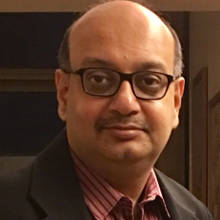[By Sasin Tipchai via Pixabay]
Here’s a quiz: What’s killed more human beings than any other disease, famine or world war? I’m guessing you won’t be surprised by the answer: a mosquito bite.
Despite the advances in modern medicine, the undeniable fact is that we’re still unable to combat the deadly effects of a bite from a tiny mosquito. There’s research to prove that entire tribes around the world have been wiped out, primarily because of malaria. Apart from malaria, the mosquito continues to act as a vector for serious diseases such as yellow fever, dengue, chikungunya, Zika, and of course, Japanese encephalitis that is ravaging eastern UP. Nearly two million people die from mosquito-borne diseases every year. The morbidity levels are considerably higher.
Over the past few days, while the unfolding tragedy in Gorakhpur has once again placed the scanner on the abysmal quality of public health in the country, it has also reminded us that we still haven’t learnt how to deal with—let alone eradicate—vector-borne diseases.
Is it simply our collective unwillingness to accept responsibility? Or is it just that vector-borne diseases are usually complex problems to combat? Perhaps a bit of both. Take for instance, malaria. In 1902, Ronald Ross won the Nobel Prize for Medicine for discovering that mosquitos were responsible for the transmission of malaria, largely based on his work in India. And yet, why is that more than a century later, we’re still figuring out how to eradicate malaria from this country? (For a quick perspective, watch this interesting TED Talk by journalist Sonia Shah titled 3 Reasons Why We Still Haven't Got Rid of Malaria)
The government has set a target to eradicate malaria by 2030, but no one quite believes its official data on malarial deaths, which is pegged at less than 500. Public health experts believe it is in excess of at least a lakh a year.
Now, here’s another intriguing piece of data. While we may have thrashed the Sri Lankans in the on-going Test series, there’s one area where we might have a thing or two to learn from them: malaria eradication. In September last year, the World Health Organization gave Sri Lanka a malaria-free certificate for not reporting a single case of malaria for the past three years. With a population of over 22 million, Sri Lanka might seem puny, compared to India’s 1.2 billion population. However, there are very few middle income countries in the world that have been able to eradicate malaria as quickly as Sri Lanka has done—despite its long-standing civil war in the North, dense forests, tropical climate and a large rural population. In the public health space, Sri Lanka is seen as a shining example of how political commitment, sensible yet unconventional strategies and determined execution can help eradicate the scourge of malaria.
Raj Ghosh, director of vaccine delivery at the India country office of the Bill & Melinda Gates Foundation, is quoted in this report published in Devex, a media platform th at serves the global development community. He had this to say about Sri Lanka’s major public health accomplishment:
at serves the global development community. He had this to say about Sri Lanka’s major public health accomplishment:
“ ‘The principle strategy is simple and V.A.S.T.,’ he wrote in the email, spelling out an acronym for what he saw as the keys to Sri Lanka’s success: vector control, access, surveillance and treatment.
Ghosh explained to Devex that when he first travelled to Sri Lanka 10 years ago, in his capacity as immunisation director for South Asia for PATH and was impressed with what he calls the three D’s that Sri Lanka had in place: good data, leading to good decision-making, leading to good delivery.
Whereas in most countries one can draw a straight line between gross domestic product per capita and life expectancy, Sri Lanka is a positive outlier, due to its commitment to health and its strong health infrastructure, he said.”
So what’s hobbled India’s fight? Based on my conversations with public health experts, I discovered some key challenges. One, the phenomenon of growing drug resistance, stemming particularly from the Mekong region and later spreading to the eastern and north eastern parts of India and now gradually to our western states.
Two, nearly half the malarial deaths are in hilly, tribal regions. And the lack of access to proper health and education systems—and a worrying reliance on traditional cures—makes them even more susceptible. (For instance, in Maharashtra alone, 40% of malarial deaths occur among tribal populations, even though they account for 10% of the total population. Recognising this, the chief minister has recently formed a task force, chaired by Dr Abhay Bang, best known for his pioneering work among tribals in Gadchiroli district, to deal with the issue.)
Three, the surveillance system at the primary health care level is broken and that makes it more difficult to detect and report cases in time and prevent epidemics.
Four, in the sixties, India was on the verge of eliminating malaria. And that’s when complacency crept in. Political commitment reduced. Funding was yanked off, and India had to scramble to ward off an epidemic in the seventies.
Five, in as many as 30% of malaria patients, the typical symptoms of fever do not manifest and tend to get suppressed. Since these folks are able to go about their normal life, transmission is often difficult to control.
The Gates Foundation has been at the forefront of malaria control efforts. As this note explains, the global war on malaria has been multi-pronged. Yet, despite ongoing research, there are no vaccines that are likely to solve the malaria virus in the near future. It is expected that genomics could well throw up new solutions.
Beyond science, in any case, greater community engagement will be key. Increasingly, the instruments of control are being put in the hands of the community. And that means ensuring the widespread use of insecticide treated bed nets and spraying non-toxic insecticides. Also, the adoption of new hand-held devices among local public health workers will make it easier to quickly transmit data on possible epidemics from remote areas. India could also take a leaf out of the experiments to breed re-engineered male mosquitos that help nullify the parasite carrying female mosquitos after mating, as this TED Talk by biotech entrepreneur Hadyn Parry shows.
Yet strategies are only as good as their execution. And that’s where India lags behind Sri Lanka. Our public health system is largely unreliable when it comes to detection and surveillance. According to this report in Internal Medicine News, based on a paper published in Lancet, researchers have found that data on malarial deaths in India don’t get captured because they happen at home and largely go undetected. Even if it does get detected, there is a worrying tendency to suppress the data and not swiftly and publicly disclose outbreak of diseases, like Zika. Worryingly, even the mainstream media reporting on Zika has been muted, as this recent article published in Caravan magazine shows.
Finally, as the Gorakhpur tragedy revealed, passing the buck inside the government—and refusing to be accountable for results remain unfortunate national traits. Equally, leaving this entire responsibility to an already overburdened public health system is nothing but short-sighted. So here’s the moot point: Do we have the collective will to change this depressing narrative?
Post script: In early August, I moderated a panel of experts at a conclave hosted by the Godrej group in Mumbai on how to make India malaria-free. The primary focus was on how to forge partnerships and collaborations among the different stakeholders: government, business, research agencies, social sector and the civil society. The panellists included Dr S Sabesan, consultant, Vector Control Research Centre, Neeraj Jain, county director, India, PATH, Dr Anup Anvikar, scientist, National Institute of Malaria Research, Shireen Mistree, partnerships and strategy, India Health Fund, Tata Trusts, and Vivek Gambhir, managing director, Godrej Consumer Products Ltd. You can watch the video recording of that session here:
(A shorter version of this column was first published in Business Standard.)



